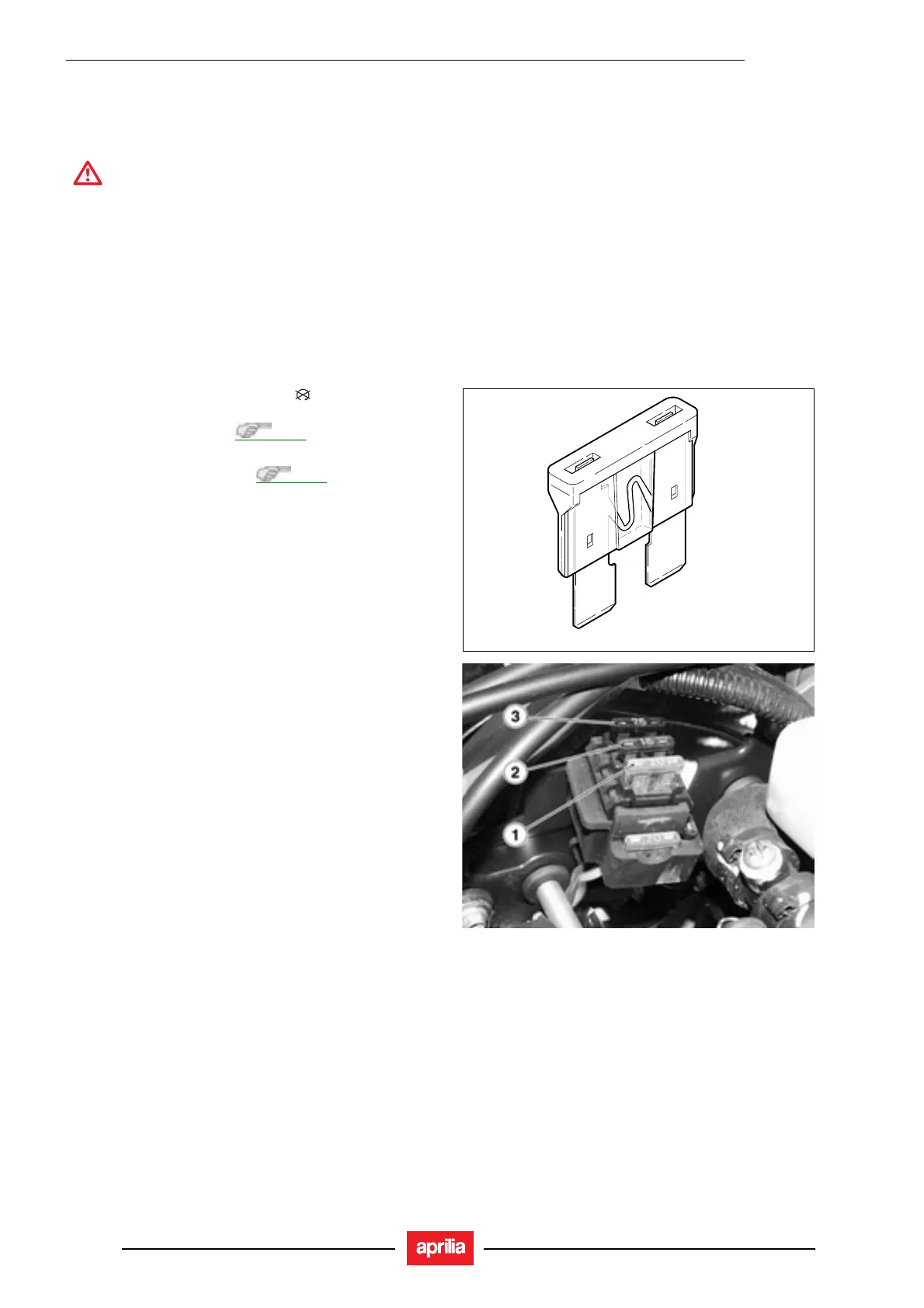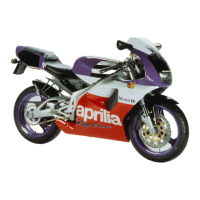ELECTRICAL SYSTEM
8 - 28
RS 125
8.14. REPLACING THE FUSES
8.14.1. REPLACING THE FUSES
WARNING
Never attempt to repair a defective fuse.
Never use a fuse of a rating other than
specified.
This could damage the electrical system or
cause a short circuit, with the risk of fire.
NOTE
When the fuses fitted in a particular position keep
blowing frequently, there might be a short circuit or
overloading.
Checking the fuses is recommended whenever an electrical
component fails to operate or is malfunctioning, or when the
engine does not start.
•
Set the ignition switch to “
”. This will prevent
accidental short circuits.
•
Lift the fuel tank; see
2.9.1.
NOTE
When the 20A fuse is removed, the digital clock will
be reset to zero. Please read
2.3.1 for instructions on
how to set the clock again.
•
Extract all fuses one by one and check for blown fuses.
•
When you find a blown fuse, determine and rectify the
cause (if possible) before fitting a new fuse.
•
Replace any failed fuses with a fuse of equal current
rating.
NOTE
When you use one of the spare fuses, remember to
add a new fuse of equal rating to the spare fuse holder.
ARRANGEMENT OF THE FUSES
9. 20-A fuse
From battery to ignition switch, voltage regulator and clock.
10. 15-A fuse
From ignition switch to all light loads and warning horn,
solenoids (
fp)
and RAVE motor.
11. 7.5-A fuse
From ignition switch to ignition and starter lockout system.
NOTE
There is one spare fuse.

